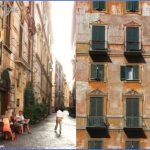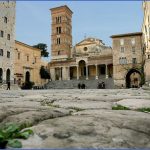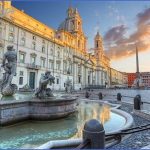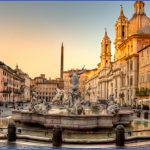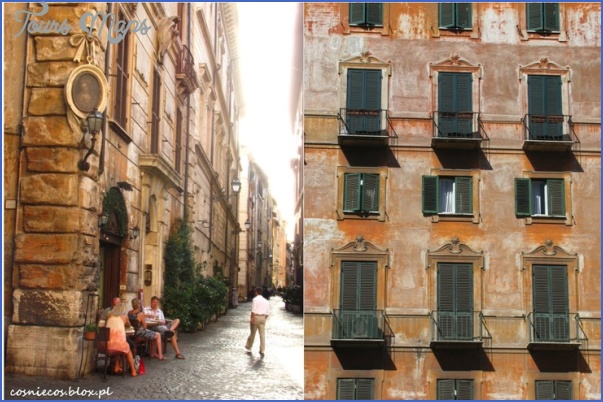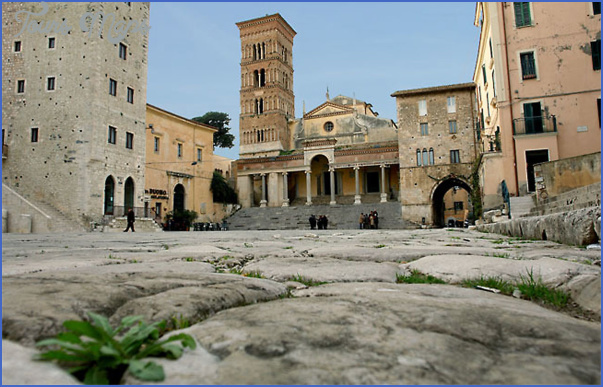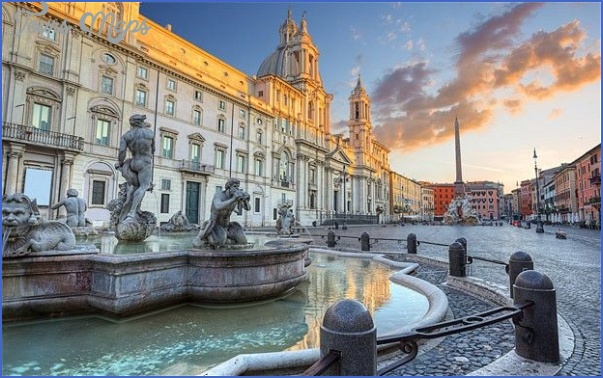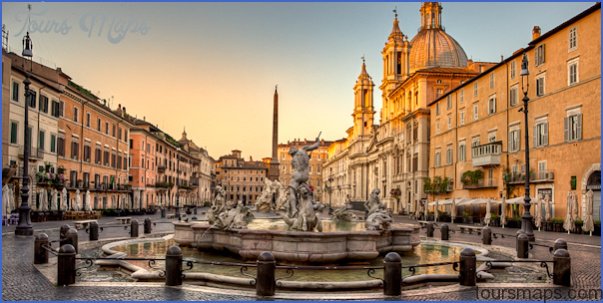ROME CENTRO STORICO
PIAZZA VENEZIA AND VIA DEL CORSO. The Via del Corso takes its name from its days as Rome’s premier racecourse, running between P. del Popolo and the rumbling P. Venezia. Palazzo Venezia was one of the first Renaissance palazzi built in the city; Mussolini used it as an office and delivered his famous orations from its balcony, but today it’s little more than a glorified traffic circle dominated by the Vittorio Emanuele II monument. Off V. del Corso, the picturesque Piazza Coionna was named for the colossal Coionna di Marco Aurelio, designed in imitation of Trajan’s column. Off the northwest comer of the piazza is the Piazza di Montecitorio, dominated by Bernini’s Palazzo Montecitorio, now the seat of the Chamber of Deputies. The opulent II Gesu, mother church of the Jesuit order, makes few concessions towards poverty, chastity, or obedience. (Take V.C. Battisti from P. Venezia, which becomes V.d. Plebiscito before entering P.d. Gesu. Open daily 6am-12:30pm and 4-7:15pm.)
THE PANTHEON. Architects still wonder how this 2000-year-old temple was erected; its dome a perfect half-sphere made of poured concrete without the support of vaults, arches, or ribs is the largest of its kind. The light that enters the roof was used as a sundial to indicate the passing of the hours and the dates of equinoxes and solstices. In AD 606, it was consecrated as the Church of Santa Maria ad Martyres. (In P. della Rotonda. Open M-Sa 8:30am-7:30pm, Su 9am-6pm.)
PIAZZA NAVONA. Originally a stadium built in AD 86, the piazza once hosted wrestling matches, track and field events, and mock naval battles (in which the stadium was flooded and filled with fleets skippered by convicts). Each of the river god statues in Bernini’s Fountain of the Four Rivers represents one of the four continents of the globe (as known then): The Ganges for Asia, the Danube for Europe, the Nile for Africa (veiled, since the source of the river was unknown), and the Rio de la Plata for the Americas. The Church of Sant’Agnese in Agone dominates the piazza’s western side. (Open daily 9am-noon and 4-7pm.)
OTHER SIGHTS. In front of the temple, the piazza centers on Giacomo della Porta’s late-Renaissance fountain and an Egyptian obelisk added in the 18th century. Around the left side of the Pantheon, another obelisk marks the center of tiny Piazza Minerva. Behind the obelisk, the Chiesa di Santa Maria sopra
Minerva hides some Renaissance masterpieces, including Michelangelo’s Christ Bearing the Cross, Antoniazzo Romano’s Annunciation, and a statue of St. Sebastian recently attributed to Michelangelo. The south transept holds the famous Carafa Chapel, home to a brilliant fresco cycle by Filippino Lippi. (Open M-Sa 7am-7pm, Su 7am-lpm and 3:30-7pm.) From the upper left-hand comer of P. della Rotonda, V. Giustiniani goes north to intersect V. della Scrofa and V. della Dogana Vecchia at the Church of San Luigi dei Frances!, home to three of Caravaggio’s most famous paintings: The Calling of St. Matthew, St. Matthew and the Angel, and Crucifixion. (Open Su-W and F-Sa 7:30am-12:30pm and 3:30-7pm, Th 7:30am-12:30pm.)
ROME CENTRO STORICO Photo Gallery
Maybe You Like Them Too
- Explore Sasbach, Germany with our Interactive Map
- Explore Nevestino, Bulgaria with this Detailed Map
- Explore Pulau Sebang Malaysia with this Detailed Map
- Explore Southgate, Michigan with this detailed map
- Explore Les Accates, France with this Detailed Map

